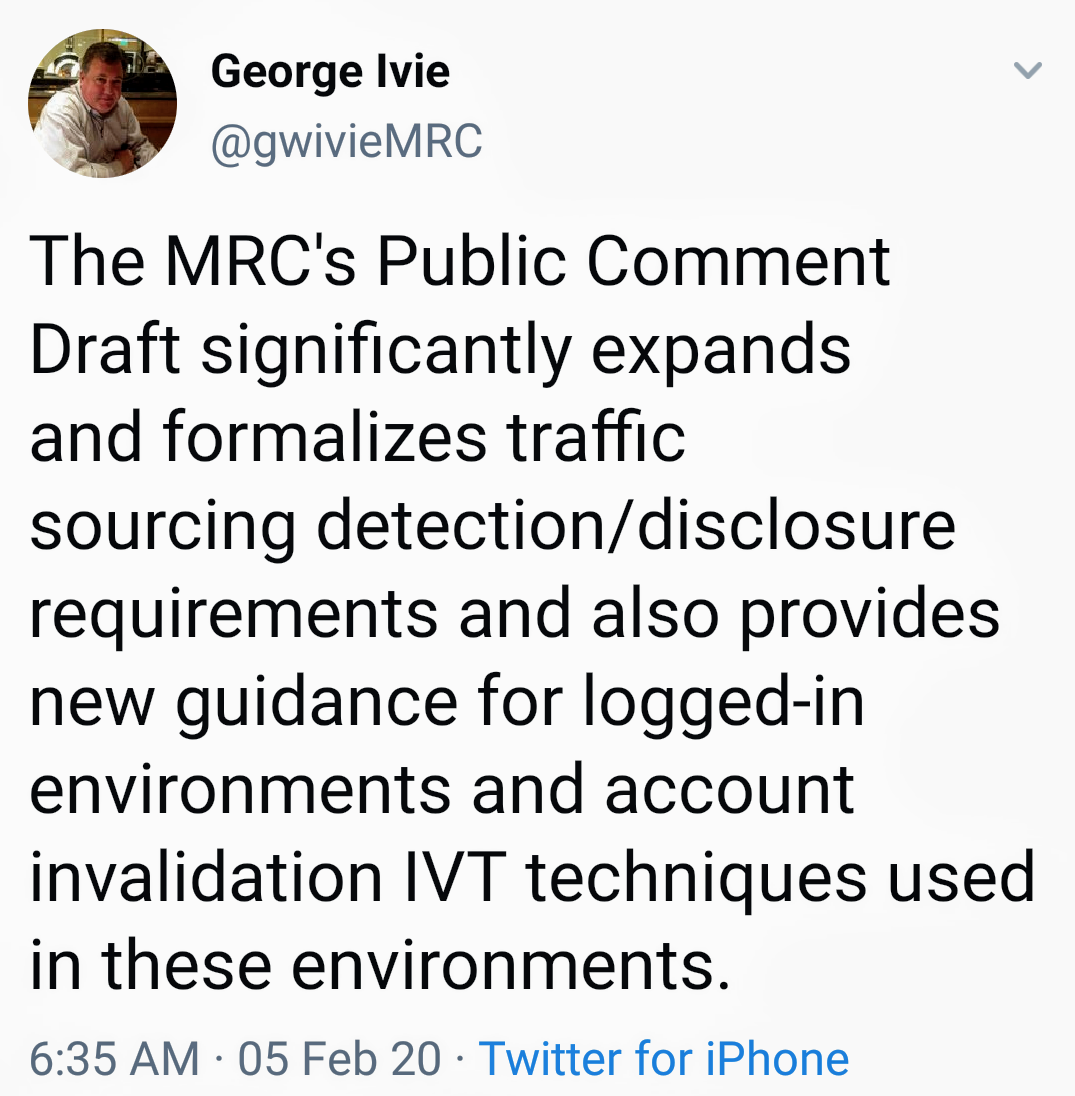MRC Proposes Ad Fraud Updates Covering In-App, OTT, Adds A 'Decision Rate' Calculation
- by Joe Mandese @mp_joemandese, February 5, 2020

In an effort to “modernize” the ad industry’s guidelines for accounting for and dealing with new forms of digital advertising fraud commonly known as “invalid traffic,” the Media Rating Council (MRC) this morning released a draft of a new version of guidelines it originally set in October 2015.
The need for an update reflects the rapidly changing nature of digital media and ad technology, which sometimes seems more of an arms race than a progression of industrial standards.
The draft proposes updates covering new threats involving in-app, OTT and other rapidly emerging digital ad environments, as well as a "decision rate" calculation for evaluating the coverage of digital ad fraud detection services.
“When we first issued MRC’s Invalid Traffic Detection and Filtration Guidelines Addendum in 2015, we indicated there would be a need to continually update the provisions contained in it in order to keep pace with a rapidly changing environment,” MRC Executive Director and CEO George Ivie stated, adding that the proposed updates represented in the draft issued this morning are “critical to helping to ensure that current IVT detection and filtration practices remain relevant as the nature of invalid traffic continues to evolve.”
advertisement
advertisement
Key updates include:
Updates and clarifications of requirements for “general invalid traffic” (GIVT) and “sophisticated invalid traffic” (SIVT) detection techniques to reflect the evolved threat landscape, as well as enhancements to baseline GIVT requirements.
The addition of a required “decision rate” calculation to provide data to users with a means of calculating a detection service’s IVT coverage levels, and to identify sources and inventory with low coverage.
Expansion and formalization of traffic-sourcing detection and disclosure requirements.
Guidance for IVT detection and filtration in “logged-in” environments, and guidance on account invalidation IVT techniques.
Enhancement of “business partner qualification” requirements, including requirements on client access controls and stricter onboarding.
Formal incorporation, inclusive of new updates, of previous interim guidance issued through MRC memos on “data center traffic,” “human labeling,” sampling, “upfront techniques” and in-app IVT.
Expansion of guidance on upfront filtration to include pre- and post-bid approaches.
Expansion of in-app guidance to also include over-the-top (OTT) environments.


